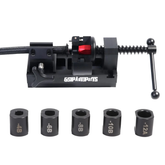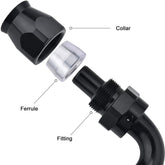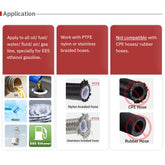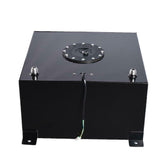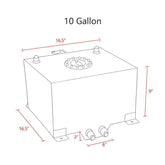Installing an EGR delete kit is one of the most popular (and important) diesel upgrades. But it is also one of the least understood. Many drivers are unaware of the benefits of delete EGR or even its impact on vehicle performance. This guide will help demystify the use of an EGR delete kit.
What is an EGR Delete kit?
EGR delete are one of the most popular parts when modifying diesel engines. An EGR delete kit is a collection of parts that car drivers use to disable (or eliminate) the EGR system on diesel vehicles. Some people call it an EGR valve delete kit, others simply call it an EGR delete kit. This kit is typically installed between the engine's exhaust and intake (over the EGR valve and EGR cooler) to prevent exhaust gases from entering the engine.
The components of the EGR kit depend on the specific engine and vary from vehicle to vehicle. Parts are also often made of steel or aluminum, although much depends on the manufacturer. That said, a complete EGR delete kit typically includes the following components: tube and O-ring assembly, clamp or clamp, block or block plate, gasket, plugs, and bolts.

How Does an EGR Delete Kit Work?
The EGR removal kit essentially includes components to removal the EGR system. The idea is to prevent soot-filled exhaust from clogging components, causing engine wear, or reducing engine performance and efficiency. When installing an EGR delete, pipes are connected to replace the EGR cooler or carry exhaust gases. The plates are also used to block the EGR path, thereby shutting down the system.
After installing the EGR valve delete kit, exhaust gases are no longer redirected to the engine. This brings many benefits and is the reason why this product set is popular with diesel car owners. It is important to emphasize that removing the EGR valve is a reversible process. You can always go back to using stock exhaust gas recirculation components if needed.
It's important to know that some vehicles require reprogramming the engine computer after installing the delete or using a tuner to bypass the OBD system. This is because the ECU controls the entire EGR. Once physically removed or blocked, the ECU may trigger error codes and check engine lights. Installing the EGR delete with a new tuner or program will help avoid these problems.

Why Do People Go for Modifications?
Car enthusiasts are always looking for modifications that can improve the performance and efficiency of their vehicle. These improvements provide many benefits, including increased horsepower, improved fuel economy and smoother acceleration.
By optimizing the various systems in your car, you will exploit its hidden potential and improve your driving experience. Among the various modifications available, EGR delete stands out as a very effective and interesting option.
Enhanced Performance:
Car enthusiasts are driven by a passion for performance. They are constantly looking to push their vehicles to the limit and feel the thrill of increased power and speed. Whether you're a racing enthusiast or simply enjoy the thrill of fast and responsive driving, EGR delete could be the key to unleashing your car's true potential.
If you eliminate the exhaust gas recirculation (EGR) system, you eliminate limitations that hinder performance. It allows your engine to breathe freely and increase power.
Saving Fuel and Your Wallet:
Efficiency is another important aspect for car enthusiasts. With rising fuel costs and growing concern for the environment, finding ways to improve fuel economy is a top priority. Deleting the EGR can save you a significant amount of money on the pump.
By delete the EGR system, you reduce exhaust gas recirculation, which helps reduce fuel consumption. This results in better fuel economy and fewer trips to the gas station, allowing you to extend your driving adventure without spending a fortune.



